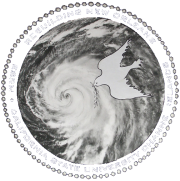Woodlands Conservancy: Orleans Audubon Society
While in NOLA, during our surveying at the Woodlands Conservatory, the Orleans Audubon Society was setting up nets to catch and tag birds. These nets were set up in the manner of a volleyball net. When the bird would fly into the net, the net would fold in on them successfully catching them. This sounds dangerous but this very rarely hurts the bird. The Audubon members check the nets every 20-30 minutes to ensure that the birds are not hurt and check if there are any. During the winter and summer they check on the nets every 10-15 minutes, due to exposure to the elements. They check more often because birds can not thermoregulate.
When a bird is successfully caught it is taken to a station to be analyzed and tagged. The station is a table that has a weight scale, tools to help tag the birds, and a computer for previous data collected. The previous data is needed to compare the birds presently caught to the ones in the past. If a bird was already caught then it is noted and can help them determine the age of the bird. There are different categories of age, 1 yearling, 2 yearling, adolescent, and adult. The previous data collection gives them a timeline of some of the birds that have been caught before. If they caught a bird the year before and it was 1 year old, it is now a 2 yearling. In order to find the birds in the data, the tags that are attached to one of their legs has a serial(identification) number on it. For all birds the tag is plastic, except for one. The Woodpeckers get metal tags so the bird can not easily remove the tag and potentially lose years of data.
The purpose of the Orleans Audubon Society is to track and note how many birds, what kind, age, and more of the birds that are captured. The Audubon Society is dedicated to the preservation and conservation of wildlife and wild places of the southeastern U.S. and fostering an understanding and appreciation of nature.
